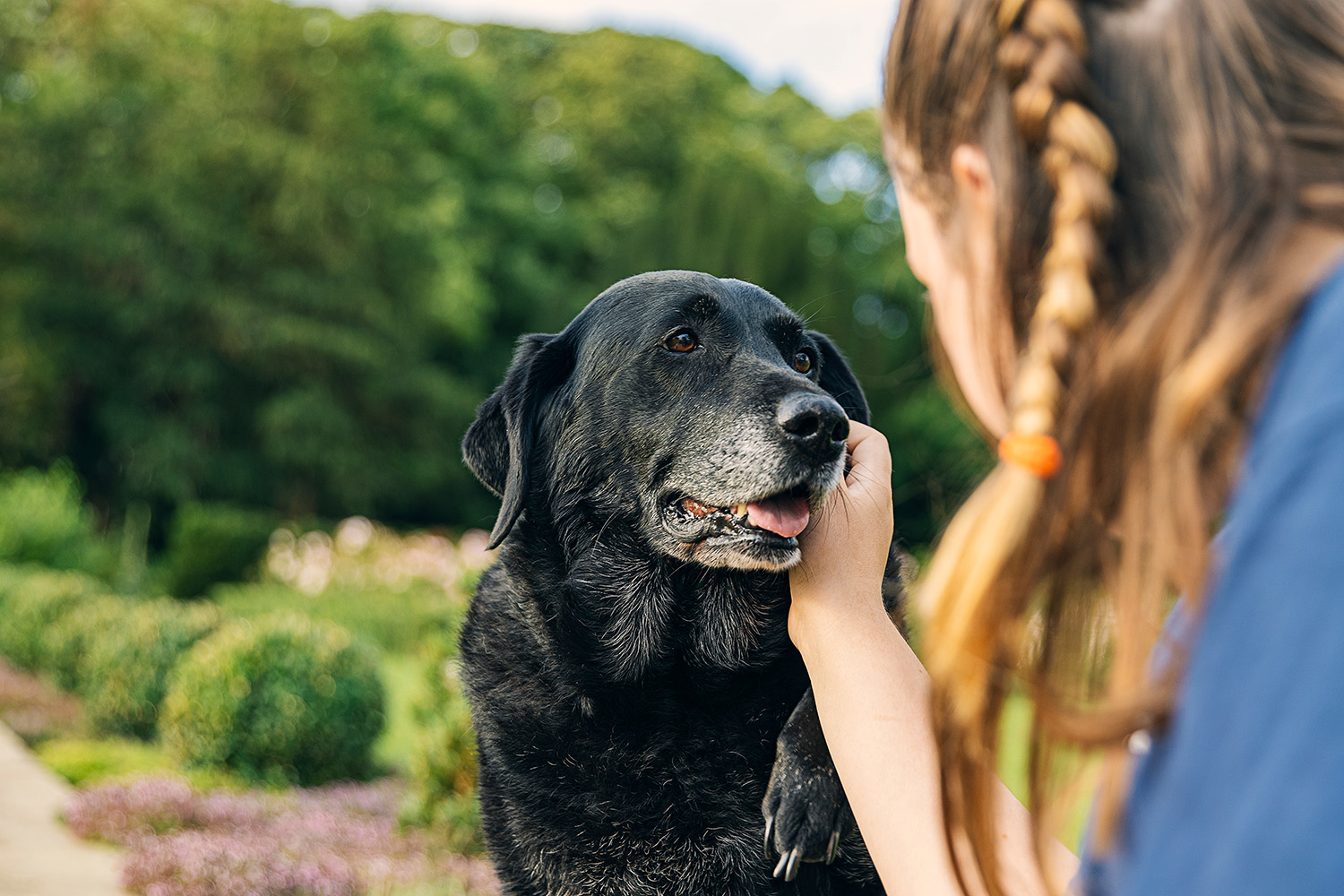
Arthritis is one of the commonest diseases of aging in older animals, and is well recognised in dogs – although it is sadly often underdiagnosed in elderly cats. However, it can be a very frustrating condition to deal with, so in this blog, we’ll be looking at all the different weapons in our armoury!
What is arthritis?
Arthritis just means “inflammation of the joints”. However, in most cases we’re talking about osteoarthritis, which is caused by wear and tear. Most animals (and people!) will develop arthritis to some degree in old age; however, other factors (such as obesity, hip dysplasia and poor conformation, for example) can trigger the very early development of symptoms, sometimes within the first few years of life.
The symptoms are those of joint stiffness, pain and lameness. However, many animals are very good at hiding the signs – cats especially just don’t jump as much, and spend more time sleeping. This may not be “old age” though – it can be a sign of serious joint pain.
Sadly, once arthritis has started, it cannot be “cured” – however, it can be managed and the pet kept mobile, comfortable and pain free, which is the aim!
Management options:
Sometimes, the simple things are the best! Little changes like making sure your dog has a ramp to get into the car, using low-sided litter trays for the cat, and giving both of them a raised, warm and draught-free bed can make a massive difference.
Exercise is also very important – arthritic animals mustn’t become sedentary, because their quality of life rapidly decreases. That said, their symptoms are often worsened by excessive exercise – so the answer is “little and often”. With a dog, this might mean three ten minute walks a day instead of a half hour gallop; for cats, lots of short play sessions instead of a night hunting. The point is, keep them moving – but not too much or too fast!
Joint supplements:
Nutritional approaches:
There are a number of dietary approaches to arthritis, and we find that many of our patients improve as a result of dietary modification. However, the exact nature of the change will depend on the individual animal, and of course their current diet! As a result, we’d strongly recommend a nutritional consultation to see if we can tweak what they’re eating to maximise joint health.
The only single change that’s likely to be universally effective is weight loss – most arthritic dogs and cats are mildly overweight because of their reduced exercise. Losing some of that weight dramatically reduces the load on their joints, making them more comfortable.
There are also a wide range of joint supplements available, usually based on glucosamine and chondroitin. These can be beneficial to dogs and cats, and are intended to provide the body with the raw materials needed to rebuild and repair damaged joints. The effectiveness is, however, very variable – it seems that some animals get a definite improvement, but others do not. The clinical research supports that, with very variable results – however, while the effectiveness of these produces varies, they are nevertheless very safe, and suitable for almost all animals.
Complementary treatments:
There are a range of complementary treatments that we can offer to arthritic animals; the most popular is acupuncture and can be very effective for a wide range of conditions. This usually requires weekly sessions, which last about 20 minutes, for a month, and then “top-ups” periodically.
Physiotherapy and Hydrotherapy
Physiotherapy and Hydrotherapy are valuable tools when considering the multimodal treatment of arthritic patients and those with chronic pain. We are able to put you in touch with local practitioners who are able to provide these treatments. Hydrotherapy involves the natural buoyancy of water to help support bodies weight during a series of controlled and specific exercises. The water creates resistance to movement and helps to restore and strengthen muscle. Warm water also possesses a soothing quality, easing pain and increasing exercise tolerance.
Conventional treatments:
Medical treatments such as anti-inflammatory drugs should be used when appropriate. They are highly effective at relieving pain and swelling from arthritis, and improving quality of life.
That’s confusing – which is best?!
The bottom line is that there is no single approach that will be effective in every case – different animals with the same disease process will respond differently. For example, while many dogs with arthritis are worse in cold, wet weather, some have flare-ups in the summer instead, and others may be painful all the time, whatever the weather. The essence of what we do at Whiskers is to work with you and with your pet to determine the best treatment plan for them, as an individual, to give them the best possible quality of life. At the end of the day, we often find that the best results are from combining multiple different modes of treatment together.
If your pet is stiff, sore, or lame, make an appointment to see one of our vets as soon as possible!




